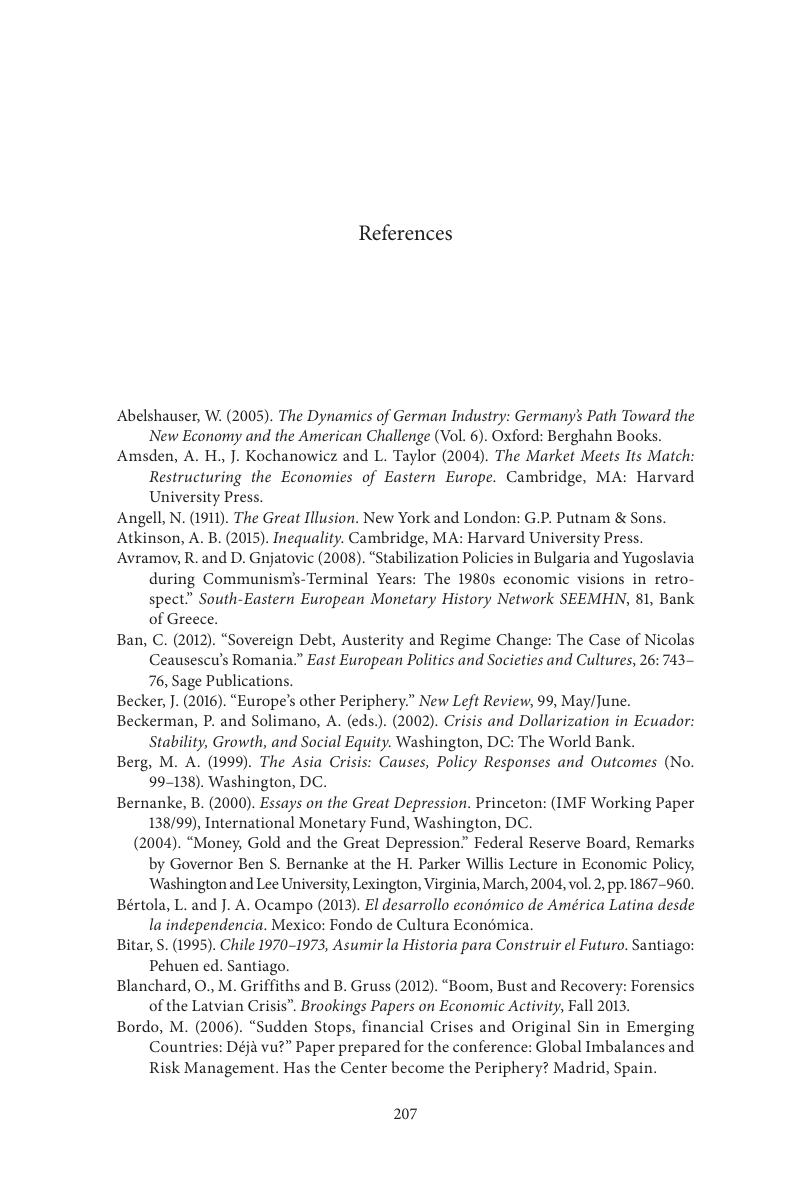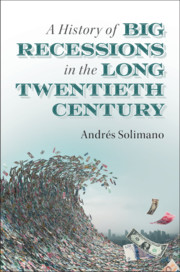Book contents
- A History of Big Recessions in the Long Twentieth Century
- A History of Big Recessions in the Long Twentieth Century
- Copyright page
- Dedication
- Contents
- Figures
- Tables
- Boxes
- Acknowledgments
- 1 Introduction
- 2 Recession and Depression
- 3 World War I, Hyperinflation in the 1920s, and World War II
- 4 The Great Depression of the 1930s
- 5 Stagflation in the 1970s, Globalization, and the Financial Crisis of 2008–2009
- 6 Two Depressions in the Early Twenty-First Century
- 7 Soviet-Type Socialism and the Postsocialist Transition
- 8 Economic Crises in Latin America and East Asia
- 9 Synthesis and Interpretation
- Appendix
- References
- Index
- References
References
Published online by Cambridge University Press: 06 February 2020
- A History of Big Recessions in the Long Twentieth Century
- A History of Big Recessions in the Long Twentieth Century
- Copyright page
- Dedication
- Contents
- Figures
- Tables
- Boxes
- Acknowledgments
- 1 Introduction
- 2 Recession and Depression
- 3 World War I, Hyperinflation in the 1920s, and World War II
- 4 The Great Depression of the 1930s
- 5 Stagflation in the 1970s, Globalization, and the Financial Crisis of 2008–2009
- 6 Two Depressions in the Early Twenty-First Century
- 7 Soviet-Type Socialism and the Postsocialist Transition
- 8 Economic Crises in Latin America and East Asia
- 9 Synthesis and Interpretation
- Appendix
- References
- Index
- References
Summary

- Type
- Chapter
- Information
- A History of Big Recessions in the Long Twentieth Century , pp. 207 - 214Publisher: Cambridge University PressPrint publication year: 2020

